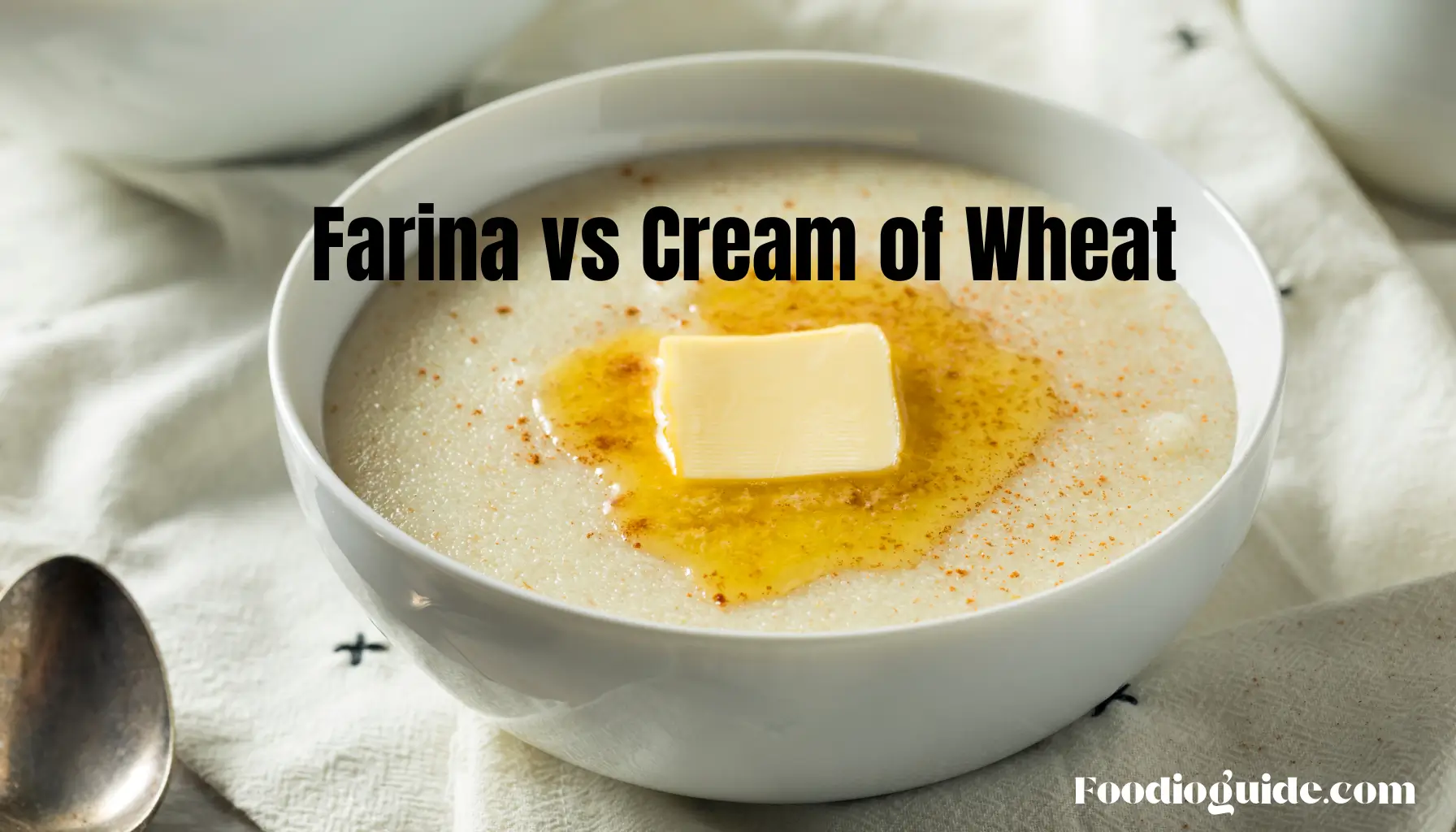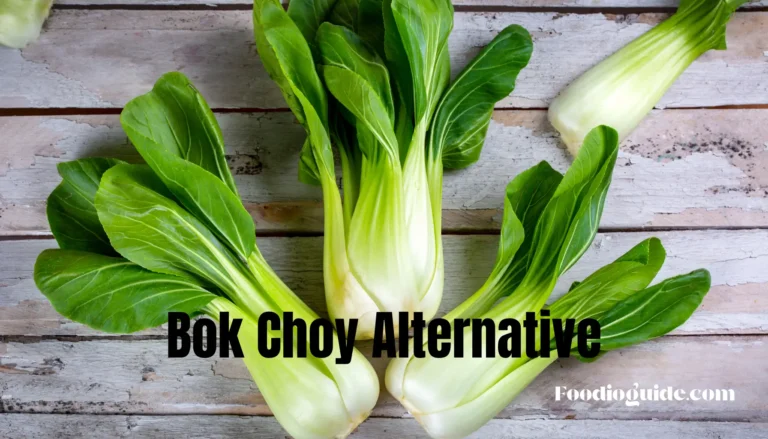Farina vs Cream of Wheat: Understanding the Difference
When it comes to wholesome and comforting breakfast options, Farina vs Cream of Wheat is a common debate. Both are popular choices for those seeking a warm, nutritious start to their day. While they might seem similar, there are distinct differences that set them apart. This guide dives deep into their unique qualities, nutritional value, and versatility in the kitchen.
What Is Farina?
Farina is a finely milled wheat product, often made from the endosperm of hard wheat grains. It is commonly used as a base for hot cereals and even desserts. Known for its smooth texture and neutral flavor, Farina has been a staple in many households for decades.
The Origins of Farina
Farina traces its roots to Latin, meaning “flour” or “meal.” Traditionally, it has been used in various cuisines as a versatile ingredient, not just for breakfast but also for baking and cooking. Its history underscores its enduring popularity worldwide.
Nutritional Benefits of Farina
Farina is rich in iron, B vitamins, and carbohydrates, making it an excellent source of energy. It’s also low in fat, which makes it a healthy choice for those monitoring their caloric intake. Additionally, its fiber content supports digestion and helps maintain a healthy gut.
What Is Cream of Wheat?
Cream of Wheat is a brand of farina cereal that has become synonymous with hot breakfast cereals. It is prepared by cooking the ground wheat with water or milk, resulting in a creamy, porridge-like consistency.
The History of Cream of Wheat
First introduced in 1893, Cream of Wheat quickly gained popularity in the United States. It was marketed as a convenient and nutritious breakfast option for families, cementing its place in American culinary traditions.
Nutritional Benefits of Cream of Wheat
Like Farina, Cream of Wheat is packed with essential nutrients. It is often fortified with additional vitamins and minerals, including calcium and folic acid, making it particularly beneficial for children and adults alike. Its smooth texture is also easy on the digestive system, making it ideal for those with sensitive stomachs.
Comparing Farina vs Cream of Wheat
While Farina vs Cream of Wheat are similar, subtle differences set them apart. Let’s explore how these two options compare in terms of texture, flavor, and preparation.
Texture Differences
Farina typically has a slightly coarser texture compared to Cream of Wheat. This is due to the milling process, as Farina can contain small bits of the wheat germ, giving it a more rustic feel. Cream of Wheat, on the other hand, is processed to achieve a finer, smoother consistency.
Flavor Profiles
The flavor of Farina is neutral and wheat-forward, making it a versatile base for sweet or savory additions. Cream of Wheat has a similarly mild taste but often feels creamier due to its finer texture and branding emphasis on creaminess.
Preparation Methods
Both Farina and Cream of Wheat are prepared similarly by cooking with water, milk, or a combination of both. However, Cream of Wheat’s refined texture allows it to cook slightly faster than traditional Farina.
See also: Palm Sugar Substitute
Nutritional Comparison: Farina vs Cream of Wheat
When examining Farina vs Cream of Wheat, their nutritional profiles are quite similar, but some differences may influence your choice.
Macronutrients
Both cereals are high in carbohydrates, making them excellent sources of energy. Cream of Wheat tends to have slightly fewer calories per serving due to its refined nature, while Farina offers a marginally higher fiber content.
Micronutrients
Cream of Wheat is often fortified with additional vitamins and minerals, including calcium, iron, and folic acid, making it a great option for boosting nutrient intake. Farina, while naturally rich in nutrients, may lack the added fortifications found in Cream of Wheat.
Gluten Content
Both Farina and Cream of Wheat contain gluten, as they are derived from wheat. Individuals with gluten sensitivities or celiac disease should avoid both options or seek gluten-free alternatives.
Cooking Tips: How to Use Farina vs Cream of Wheat
Both Farina and Cream of Wheat are incredibly versatile, extending their use beyond breakfast.
Creative Uses for Farina
Farina’s slightly coarser texture makes it ideal for:
- Adding to baked goods for a nutty flavor.
- Thickening soups and stews.
- Creating desserts like puddings and cakes.
Unique Ideas for Cream of Wheat
The creamy texture of Cream of Wheat lends itself to:
- Sweet breakfast bowls topped with fruits and nuts.
- Savory porridge with cheese and vegetables.
- Smooth dessert bases for recipes like soufflés.
Popular Recipes: Farina vs Cream of Wheat
Let’s explore some delicious recipes featuring Farina vs Cream of Wheat to inspire your next meal.
Farina Breakfast Bowl Recipe
Ingredients:
- 1 cup of Farina
- 2 cups of milk or water
- Honey, nuts, and fresh berries for topping
Instructions:
- Bring the milk or water to a boil.
- Gradually whisk in the Farina to prevent lumps.
- Cook for 5-7 minutes, stirring frequently.
- Serve with your favorite toppings.
Cream of Wheat Savory Porridge Recipe
Ingredients:
- 1 cup of Cream of Wheat
- 2 cups of water
- Grated cheese, salt, and pepper to taste
Instructions:
- Heat water in a saucepan until it simmers.
- Stir in Cream of Wheat, cooking for 2-3 minutes.
- Add cheese and seasonings, mixing well.
- Serve warm as a savory side dish.
Health Benefits of Choosing Farina vs Cream of Wheat
Including Farina vs Cream of Wheat in your diet offers numerous health benefits. Let’s take a closer look.
Energy Boost
Both cereals are excellent sources of carbohydrates, providing sustained energy throughout the day. They’re perfect for a pre-workout meal or a busy morning.
Digestive Health
The fiber content in Farina supports healthy digestion, while the smooth texture of Cream of Wheat is easy to digest, making it suitable for all age groups.
Nutritional Fortification
The added vitamins and minerals in Cream of Wheat make it a nutrient-dense option for families seeking to enhance their overall diet.
Final Verdict: Farina vs Cream of Wheat
When deciding between Farina vs Cream of Wheat, your choice ultimately depends on personal preferences and dietary needs. Farina offers a slightly coarser texture and natural nutrient profile, while Cream of Wheat provides a creamier consistency and fortified nutrition.
FAQ’s
1. What is the difference between Farina and Cream of Wheat?
Farina vs Cream of Wheat mainly differ in texture and branding. While Farina is a general term for a wheat product made from the endosperm of wheat, Cream of Wheat is a specific brand of farina that is more finely processed and typically creamier in texture.
2. Which one is better for breakfast, Farina or Cream of Wheat?
Both Farina and Cream of Wheat make excellent breakfast options, but Cream of Wheat is usually preferred for its smoother, creamier texture. Farina, on the other hand, has a slightly coarser texture, which some people prefer for a heartier meal.
3. Can I use Farina instead of Cream of Wheat?
Yes, Farina vs Cream of Wheat can be used interchangeably in recipes, but expect a difference in texture. Farina has a grainier consistency, while Cream of Wheat is smoother and cooks faster.
4. Are Farina and Cream of Wheat gluten-free?
No, both Farina vs Cream of Wheat contain gluten because they are made from wheat. They are not suitable for people with celiac disease or gluten intolerance.
5. Which has more fiber, Farina or Cream of Wheat?
Farina tends to have slightly more fiber than Cream of Wheat due to its less refined nature. However, both are relatively low in fiber compared to other whole grains.
6. Is Cream of Wheat fortified with vitamins?
Yes, many varieties of Cream of Wheat are fortified with additional vitamins and minerals like iron, calcium, and folic acid, while Farina might not be unless specified.
7. Can I use Farina to make a creamy dessert?
Yes, Farina can be used to make creamy desserts like puddings, custards, and cakes. It has a smooth consistency when cooked, making it perfect for such recipes.
8. What are the health benefits of Farina and Cream of Wheat?
Both Farina vs Cream of Wheat offer energy-boosting carbohydrates and some micronutrients. Cream of Wheat may have added benefits due to fortification, while Farina provides a more natural nutrient profile.
9. How long does it take to cook Farina and Cream of Wheat?
Farina vs Cream of Wheat both cook quickly. Farina usually takes about 5-7 minutes to cook, while Cream of Wheat may take slightly less time, around 3-5 minutes due to its finer texture.
10. Which one is better for people with sensitive stomachs?
Cream of Wheat might be a better choice for those with sensitive stomachs because its smoother texture is easier to digest. Farina, being slightly coarser, may be harder for some people to digest.
11. Can I make Farina or Cream of Wheat with water instead of milk?
Yes, both Farina vs Cream of Wheat can be prepared with water instead of milk. The texture and flavor will be different, but both options are valid for a dairy-free meal.
12. Is Cream of Wheat a healthy food choice for children?
Yes, Cream of Wheat is often marketed as a healthy food for children, especially because it is fortified with essential nutrients like iron and folic acid. However, the nutritional value may depend on the specific brand and variety.
13. Can I add fruit to Farina or Cream of Wheat?
Yes, adding fruit to either Farina vs Cream of Wheat is a great way to enhance the flavor and nutritional value of your meal. You can top them with fresh berries, bananas, or dried fruits for a more balanced dish.
14. How do I make Farina taste better?
To make Farina vs Cream of Wheat taste better, you can add spices like cinnamon, nutmeg, or vanilla, or sweeteners like honey or maple syrup. For a savory twist, try adding cheese, herbs, or even vegetables.
15. Are Farina and Cream of Wheat the same in terms of calories?
While both Farina vs Cream of Wheat have a similar calorie count, Cream of Wheat may have slightly fewer calories per serving because it is more refined. However, the calorie count will vary depending on the preparation method and added ingredients.






